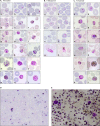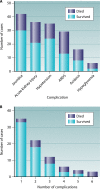Human infections and detection of Plasmodium knowlesi
- PMID: 23554413
- PMCID: PMC3623376
- DOI: 10.1128/CMR.00079-12
Human infections and detection of Plasmodium knowlesi
Abstract
Plasmodium knowlesi is a malaria parasite that is found in nature in long-tailed and pig-tailed macaques. Naturally acquired human infections were thought to be extremely rare until a large focus of human infections was reported in 2004 in Sarawak, Malaysian Borneo. Human infections have since been described throughout Southeast Asia, and P. knowlesi is now recognized as the fifth species of Plasmodium causing malaria in humans. The molecular, entomological, and epidemiological data indicate that human infections with P. knowlesi are not newly emergent and that knowlesi malaria is primarily a zoonosis. Human infections were undiagnosed until molecular detection methods that could distinguish P. knowlesi from the morphologically similar human malaria parasite P. malariae became available. P. knowlesi infections cause a spectrum of disease and are potentially fatal, but if detected early enough, infections in humans are readily treatable. In this review on knowlesi malaria, we describe the early studies on P. knowlesi and focus on the epidemiology, diagnosis, clinical aspects, and treatment of knowlesi malaria. We also discuss the gaps in our knowledge and the challenges that lie ahead in studying the epidemiology and pathogenesis of knowlesi malaria and in the prevention and control of this zoonotic infection.
Figures





References
-
- Garnham PCC. 1966. Malaria parasites and other haemosporidia. Blackwell Scientific Publications, Oxford, United Kingdom
-
- Butcher GA, Cohen S, Garnham PC. 1970. Passive immunity in Plasmodium knowlesi malaria. Trans. R. Soc. Trop. Med. Hyg. 64:850–856 - PubMed
-
- Singh B, Kim Sung L, Matusop A, Radhakrishnan A, Shamsul SS, Cox-Singh J, Thomas A, Conway DJ. 2004. A large focus of naturally acquired Plasmodium knowlesi infections in human beings. Lancet 363:1017–1024 - PubMed
-
- White NJ. 2008. Plasmodium knowlesi: the fifth human malaria parasite. Clin. Infect. Dis. 46:172–173 - PubMed
Publication types
MeSH terms
Substances
Grants and funding
LinkOut - more resources
Full Text Sources
Other Literature Sources
Medical

